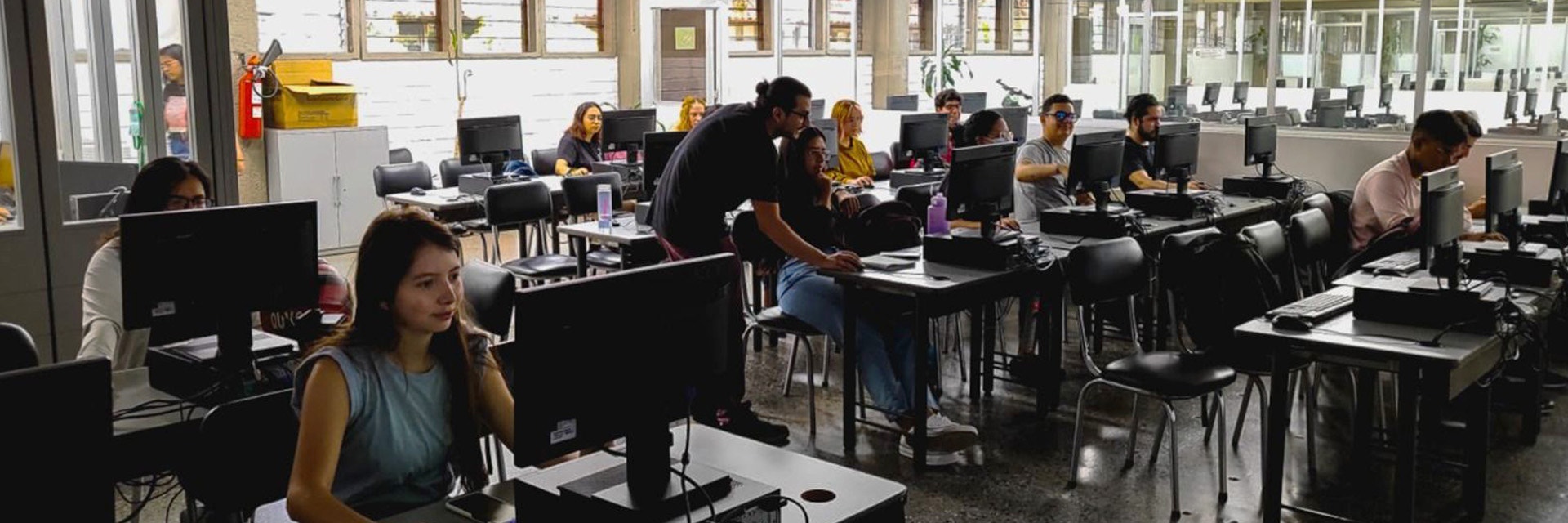LIFE AT MATERIALISE
Worlds Apart? How The Materialise Medical Engineering School Trains World-Class 3D Planning Experts in Ukraine and Colombia
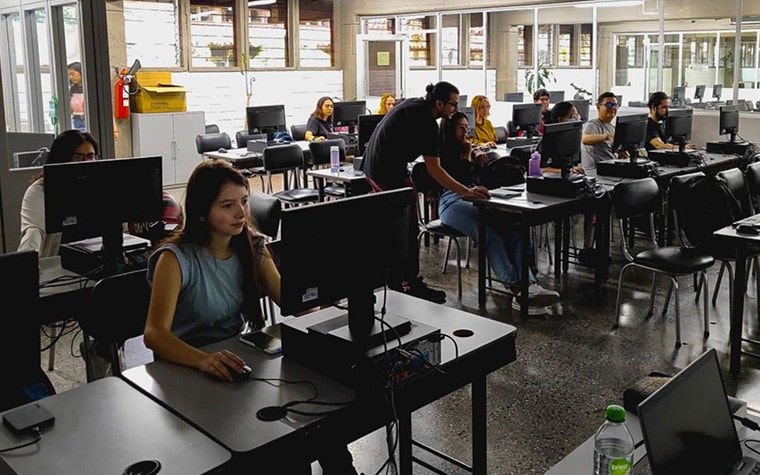
Ukraine and Colombia don’t share many apparent similarities at first glance. They’re in opposite hemispheres and are linguistically different. Plus, both are culturally worlds apart in terms of food (Bortsch soup compared to Bandeja Paisa: a mixture of rice, beans, pork, egg, plantain, and more). But they do have a few things in common. Both have embraced innovative 3D technologies in healthcare and set up the Materialise Medical Engineering School to train the next generation of talented professionals to use 3D planning and printing tools.
The two countries have different reasons for widely adopting different 3D technologies. For Ukraine, a nation fighting an ongoing war, it’s a transformative solution for patients and the economy. 3D-printed prosthetics support amputees back on their feet, while cranio-maxillofacial (CMF) solutions provide personalized implants to help with disfigurement and facial injuries. This benefits patients, employees, companies, and the broader economy — creating a more inclusive job market while paving the way for individuals to have a more self-sufficient future.1
Colombia, on the other hand, is ranked 22nd out of 191 healthcare systems in overall efficiency. In comparison, the United States, Australia, Canada, and Germany ranked 37th, 32nd, 30th, and 25th respectively.2 Innovations like 3D planning tools and software are helping the country maintain its high standing and provide more favorable patient outcomes, such as in complex spinal pathologies for example.
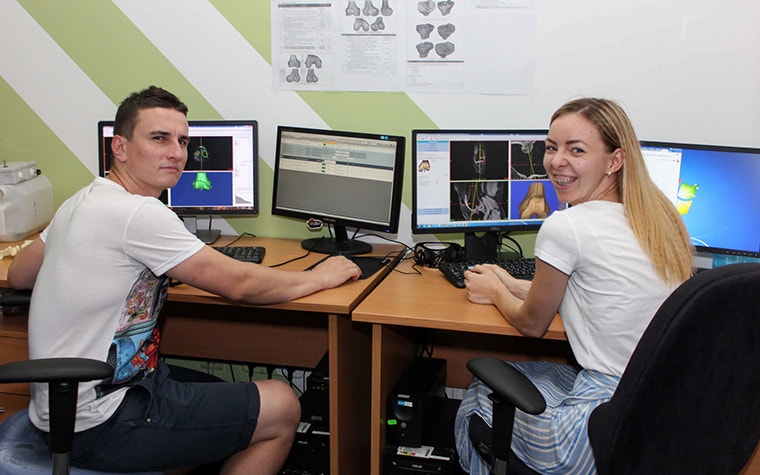
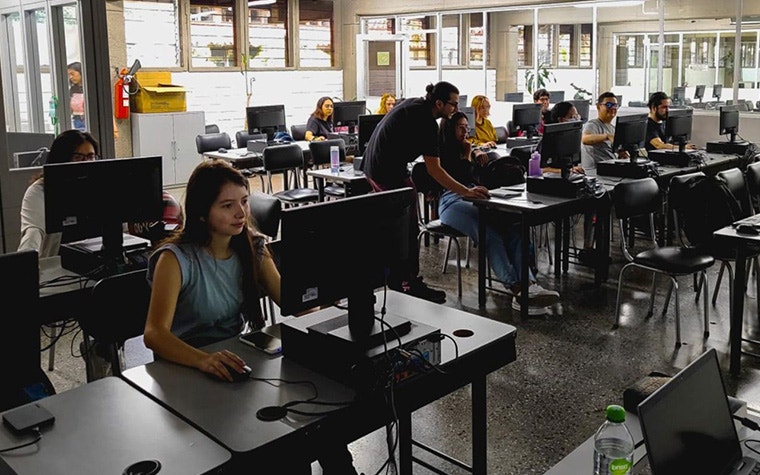
[Left] Two students at Materialise Ukraine using PROPLAN CMF™ software. [Right] Students at the University of Antioquia are learning how to use Materialise Mimics Core and 3-matic Medical software.
There’s a need for medical professionals highly trained in additive manufacturing (AM) for both countries — particularly around preparing advanced clinical procedures, medical image-based planning, and 3D printing technology. The Materialise Medical Engineering School (MMES), which is only available in Ukraine and Colombia, aims to solve these complex challenges in a novel way while helping us stay at the forefront of medical innovation.
MMES: a medical school like no other — training future conversion and design engineers
MMES is a 3 – 4-week program at our office in Kyiv, different universities in Colombia (The University of Antioquia and the EIA University), and our office in Medellín. The course happens at various times of the year, depending on the location.
The course trains students on using 3D technologies for procedures like processing CT images, converting these images into 3D anatomical models, and learning the basics of patient-specific implant design. Students get practical experience with our medical software Materialise Mimics Core, 3-matic Medical, PROPLAN CMF™, and more with qualified experts in a collaborative classroom setting for 4 – 5 hours a day. And Materialise covers the teaching costs as well as access to our medical software.
“I joined the medical school in autumn 2017,” says Olena Zhabynska, Conversion Engineering Team Leader at Materialise Medical and an MMES alumna. “A classmate working at Materialise reposted an advertisement about it, and I was intrigued but a little hesitant. I studied material science, and not much was related to the medical field, apart from some basic human anatomy at school. But I felt compelled to apply.”

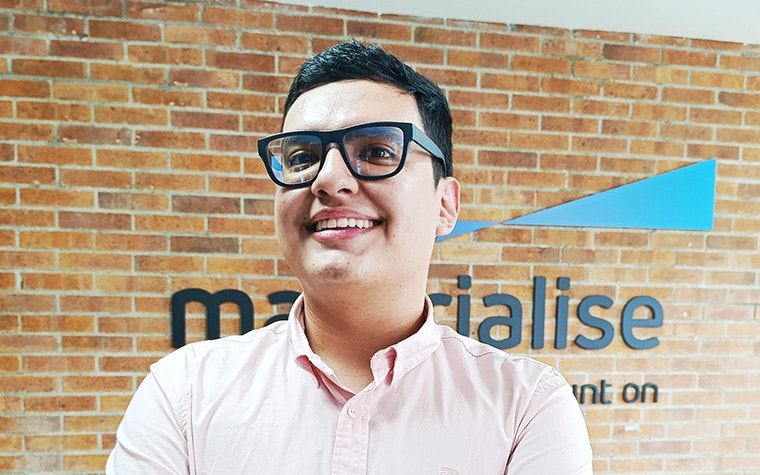
Olena Zhabynska and Sebastián Berrio.
Another of the school’s alumni found out from a Materialise employee and felt drawn to apply, too — but for different reasons. “My friend is a team leader in the CMF division, and she encouraged me to apply for the Software department,” says Sebastián Berrio, Conversion Engineer at Materialise Colombia. “I didn’t have much experience in terms of software programming, so that avenue wasn’t for me. However, they [the interviewers] recommended I sign up for the Medical Engineering School instead. I studied as a biomedical engineer and worked at a hospital before, so it seemed like a natural step,” he says.
MMES is open to anyone and everyone: students/university graduates, professionals from all walks of life, and even employees within Materialise. However, what are trainers looking for? Only the most talented and dedicated individuals.
“We have no restrictions in that sense,” says Mykola Tsarenko, Process Engineer at Materialise Medical. “We accept students who are in the middle of their course and working, graduates who have finished, and even professionals from other organizations, not just Materialise.
Designing the future — converting trainees into our next medical innovators
“We set up the school in Ukraine so that we could hire the best engineers in the AM field,” says Oleksandr Negoda, Trainer at Materialise Medical. “Additionally, it provided us with skilled staff while condensing the training period down for different job profiles. The school started in 2017 and has been going from strength to strength, with a program at least once a year that focuses on different projects and products depending on the business’s needs. This was even during the COVID-19 pandemic,” he says.
“In Ukraine, we test candidates’ technical skills before they join. So, when they enter the school, we concentrate more on their soft skills,” says Alexander Kanivets, Medical Services Trainer at Materialise Medical. “Aptitude is important, and we evaluate that during the course. But most [technical] things can be learned. What we want is a combination of soft and hard skills because we believe Materialise’s strength lies in our mixture of people with technical ability and a collaborative mindset. They must show ability, teamwork, and drive to make a difference in society using technologies like 3D planning,” he continues.
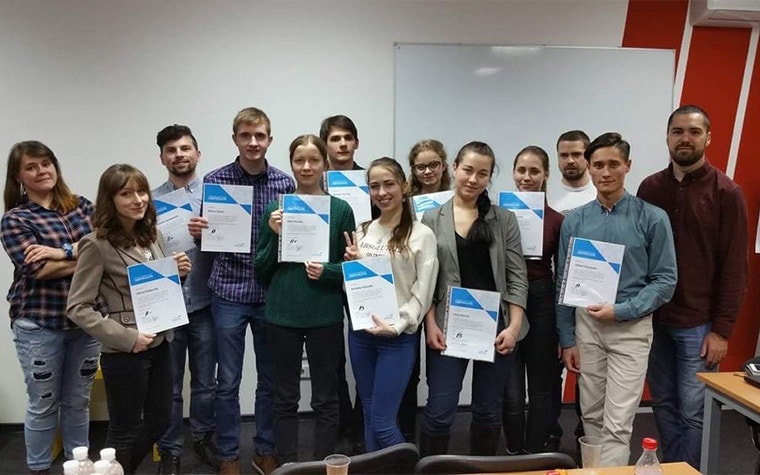

“Colombia shares a similar story. Likewise, we also want excellent candidates to help us fulfill our company’s mission,” says Nicolás Buitrago, Medical Service Trainer at Materialise Medical. “However, due to our selection process and how long MMES has been running here, we lean toward assessing the students’ technical aspects before and during the course. We have courses twice a year and want to filter the best candidates. Therefore, we believe MMES is the best way to achieve this. I’m a trainer in the CMF department, and what struck me about the course is that it allows students to show us what they can do in a less pressurized environment compared to simply assessing someone in an interview process.”
Learning unique AM and life skills
The course is primarily conducted at multiple universities in Colombia. In comparison, the course is run at our Ukrainian office for students in that region. Regardless of the location and format, however, the trainers see the school as an excellent method to source the best talent. And for successful students, they receive advanced training, a certificate of competence from the university that companies in AM recognize, and are potentially fast-tracked into a job as a Conversion or Design Engineer.
“We convert 2D images into 3D anatomical models,” explains Olena. “We learned about segmentation, CMF, the knee, and everything about a patient’s anatomy, receiving different perspectives from multiple trainers. It was fascinating, and I felt like a spell was cast over me — it was all new and interesting. But it was also challenging; I was not deterred though. The trainers were so supportive; I had an excellent time. After finishing the course, I was offered a position as a Conversion Engineer. While in that role, I supported the trainers who were responsible for MMES. Now, I’m a Conversion Engineering Team Leader in CMF,” she says.
“I learned specific technical skills related to our software, which Nicolás touched upon. It was great,” Sebastián says. “Although what stood out for me was the skills I acquired and the different environment I’m now working in. Previously, I worked on my own at the hospital. Now, I collaborate with people in Ukraine, France, Malaysia, and across the globe. It’s completely different, and I love my team and what I do.”
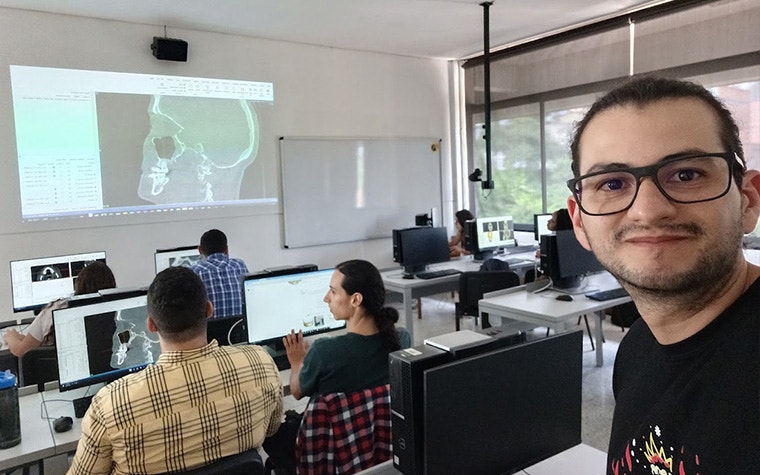

Olena and Sebastián’s situation isn’t uncommon. Up to 90% of candidates pass the course in Ukraine, with almost half receiving a job offer. In Colombia, an average of around 88% of the candidates accepted during the last three courses gained certification, with approximately 20% being hired.
“We make a yearly forecast for product lines, so we can estimate the teams’ growth based on the company’s needs, as Oleksandr said earlier,” says Mykhailo Kasprov, Medical Services Department Manager at Materialise Medical. “The beauty about MMES is that based on the forecast, we can train the most qualified candidates to meet our needs and grow without any delays. It suits us as a business and gives opportunities to graduates or professionals willing to learn.”
“And we don’t believe in restricting talent,” continues Mykola. “In fact, we plan on offering the course at universities to expand the project scope to gain more candidates,” he says.
Changing lives and societies for the better
In a macro sense, the demands for 3D planning and printing solutions have rapidly increased over the years. Surgeons want to access such tools to help them prepare for procedures, students and professors want to learn about the latest medical techniques, and companies/government bodies want to use them in their organizations.
In the past, Materialise was the only company capable of offering reliable training in the subject in Ukraine, and we were a trendsetter thanks to MMES. Now, more and more companies are looking at AM as a viable solution, and organizations across industries want our employees because of their training and expertise in 3D technologies.
Colombia's hospital infrastructure is among the best in Latin America,3 offering high-quality healthcare services, advanced technology, and well-trained medical professionals. It is also a hotbed for clinical trials and research, making it attractive to medtech companies.4 The use of cutting-edge 3D technologies should be considered for inclusion in any healthcare professional or company’s toolbox. MMES is a sound way to ensure the industry has the people it needs.
However, on an individual level, MMES benefits students who are intrigued by AM and want a new challenge. “It’s a good opportunity to expand your limits and get out of your comfort zone in a fun, safe, and nurturing environment in only 3 – 4 weeks,” says Alexander.
“I agree. Anyone who gets on the course will have a great time,” continues Olena. “It’s exciting. You’re learning something unique and doing something meaningful that impacts people and affects their quality of life,” she says.
“This may sound corny, but just do it. Materialise is a great place to work, and I’m following my dreams thanks to MMES. You’ll grow and learn a lot. And you’ll be doing something meaningful, as Olena says. What’s not to love about that,” concludes Sebastián.
New dates for the next MMES are being finalized. For further information about MMES in Ukraine, please check out the link below. And for Colombia, get in touch with one of our HR experts.
Share on:
You might also like
Never miss a story like this. Get curated content delivered straight to your inbox.
